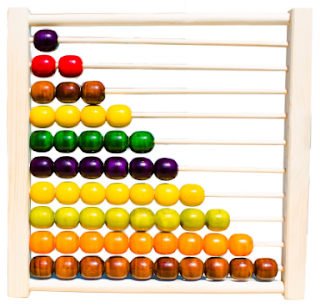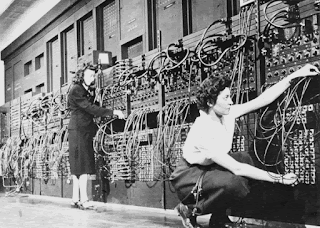Evolution of Computers
Computers are an integral part of every aspect of Human life in the modern world. They are being increasingly used in all walks of life be it education, research, industry, business, medicine law, government organization, or sports. Initially, computers were used only by big organizations and scientist for research purpose. With the advancement in technology, computers have become affordable and are being used by small organizations and even individuals.
The Word "Computer" has been derived from a word "compute" which means to calculate. The original objective of inventing a computer was to create such a device which could perform fast calculations. But now it is not limited to performing calculations only. In fact, 80% of the work performed by the computer today is non-mathematical in nature.
Today computers are very small in size. But in earlier days, computers were very big in size, which produces so much heat that they had to be kept in air-conditioned rooms. They were bulky and slow in processing. Although various computing devices were developed in different periods since prehistorical times, we are going to discuss about the history of development of various computing devices in this blog.
ABACUS
- Abacus is considered to be first digital computer.
- It was inented by chinese thousands of years ago.
- It was the first calculating device which could perform counting, addition and substraction.
- It consists of wooden frame having rods with beads.
- The frame is divided into two parts: Heaven and Earth
- Heaven has two beads in each rods and Earth has five beads in each rod which can be moved up and down to perform the calculations.
NAPIER'S BONES
- It was invented by John Napier in 1617
- It was made of bones and numbered rods which can be used to perform multiplication of any number by a number 2-9.
- John Napier is mostly known for the invention of logarithm.
PASCALINE
- It was invented by Blaise Pascal in 1642.
- It used gears, wheels and dials.
- Numbers were displayed by rotating the wheels.
- It could add and subtract numbers.
LEIBNIZ CALCULATOR
- It was invented by Gottfrired Von Leibniz in 1673.
- It was capable of perform all mathematical calculation like addition, subtraction, multiplcatin, division and even to find square roots.
JACQUARD LOOM
- It was invented in 1805 by Joseph J. Jacquard.
- It controlled the way needles passed in a loom punched card.
- It formed the basis of storing information on punched card. It is noted that A punched card is a stiff paper which is used to contain digital data represented by the presence or absence of holes.
DIFFERENCE ENGINE
- It was invented by charles Babbage in 1822.
- It used punched cards to store information and do calculation up to 20 decimal places.
- It is called Difference Engine because it is based on mathematical principle namely, the method of finite difference.
ANALYTICAL ENGINE
- It was invented by Charles Babbage in1833.
- It would have been the world first general purpose computer that had five units- Inputs, Output, Store, Mill and Control.
- All the Computers used nowdays are based on this machine.
- Input and Output units are used to enter data and display results respectfully.
- Store is used to store data.
- Mill is used to perform calculations and control unit use to control the overall working.
TABULATING MACHINE
- It was invented by Herman Hollerith in 1888.
- It used punched cards to input and store data and information.
- It could read the data, process it and produce the Output.
MARK I
- MARK I was invented by Howard Aiken in 1941.
- It worked automatically and did not require work to be done by hand.
- It was capable to execute long calculations automatically.
ENIAC (Electronic Numerical Integrator And Computer)
- It was invented by Mauchly and Eckert in 1943.
- It was the first general purpose electronic digital computer.
- It was used to do mathematical operations and store data.
- It was big in size and used a lot of electricity.
EDVAC (Electronic Discrete Variable Automatic Computer)
- It was invented by Mauchly, Eckert and John Von Newman in 1949.
- It was based on the concept of program being stored in the computer along with data.
- It used binary rather than decimal and could store program for future use.
UNIVAC ( Universal Automatic Computer)
- It was developed in 1951 by Mauchly and Eckert.
- It was the first successful commercial computer.
- It was capable of handling both numeric and text data.
- It was equipped with magnetic tape and buffer memory.














0 Comments
Post a Comment
If you have any doubt, please let me know